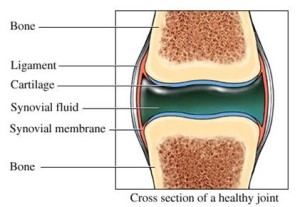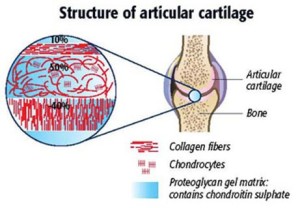Joint is a part of musculoskeletal system
To best understand how the joints work, we first need to understand that the joint is a part of musculoskeletal system which is constructed of bones and muscles.
The bones attach to each other at a joint, where tissue, tendons and ligaments help to connect the bones. These two structures usually provide stability at the joints. In contrast, on the ends of each bone is a lining of smooth, protective cartilage and soft tissue (synovial membrane) that produces a liquid (synovial fluid). This liquid cushions and lubricates the bones, allowing smooth movement so that bones do not rub against each other.
2.1. Cartilage
We are about one centimeter taller in the morning than in the evening. As the day goes on, the cartilage between our bones gets compressed from standing, sitting and other daily activities. This makes us just a little shorter at the end of the day.
Cartilage is the most important structure in joint health as it dictates the functionality of the joint; however, it is the most vulnerable to degenerative changes (Loeser RF, 2010).
The major functions of the cartilage are:
1) Shock absorbing: between the vertebrae (spinal bones), cartilage absorbs the shocks that would otherwise damage and jar the bones when we run or walk.
2) Smooth movement: cartilage reduces friction at the joints, providing a smooth surface, thus facilitating bone movement. At the same time, it joins bones firmly together in such a way that a certain amount of movement is still possible between the bones.
3) Growth: Hyaline cartilage, which can be found on the articular surface of bones, is responsible for the longitudinal growth of the long bones.



Leave a Comment
You must be logged in to post a comment.